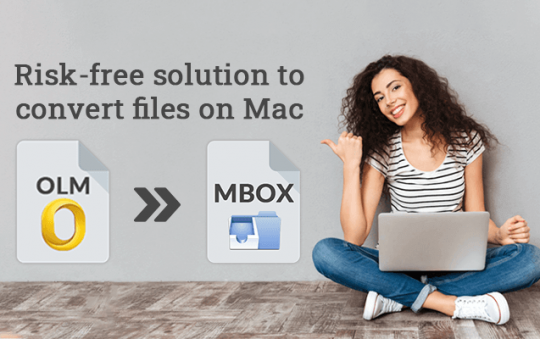Are you a software developer who is tired of dealing with slow computers and lagging performance while coding? It may be time to consider building a PC specifically designed for software development. By customizing your hardware and optimizing your setup, you can create an efficient and powerful workstation that will greatly enhance your productivity. In this article, we will guide you through the best practices for building a PC for software development, highlighting the key components and considerations that will ultimately result in the perfect software development machine, the Software Dev PC Build Guide.
Software Dev PC Build Guide: Optimize Your Development Experience
Optimizing your software development experience begins with understanding the key components that will contribute to a smooth and efficient workflow. Let’s explore the necessary steps and components you should consider when building your software development PC.
Choosing the Right Processor:
The processor is the brain of your PC, responsible for executing your code and handling multiple tasks simultaneously. For software development, it is crucial to choose a processor that offers high performance and multitasking capabilities. Look for processors with multiple cores and high clock speeds, such as Intel Core i7 or AMD Ryzen 7 series, to ensure smooth compilation and execution of your code.
Selecting Sufficient RAM:
Another important aspect of a software development PC is the amount of RAM it has. RAM, or Random Access Memory, is responsible for temporarily storing data that your software needs to access quickly. To ensure smooth multitasking and speedy compilation, aim for at least 16GB of RAM. If you often work with resource-intensive applications or large datasets, consider upgrading to 32GB or even 64GB for optimal performance.
Fast Storage Solution:
Since software development involves working with numerous files and codebases, a fast storage solution is essential for quick file access and compiling times. Consider investing in a solid-state drive (SSD) instead of a traditional hard disk drive (HDD). SSDs offer faster read and write speeds, resulting in reduced compile times and snappy software performance.
Graphics Card Considerations:
While software development doesn’t heavily rely on graphics processing, having a capable graphics card can still enhance your overall experience. A dedicated graphics card with at least 4GB of video memory will provide smooth graphics rendering, making it easier to work with graphical interfaces and design tools.
Choosing the Right Monitor:
A high-quality monitor is crucial for software development, as it directly affects your productivity and eye comfort. Look for a monitor with a high-resolution display (at least 1920 x 1080 pixels) and a comfortable screen size (between 24 to 27 inches). Additionally, consider an IPS panel for accurate color reproduction and wider viewing angles.
The Importance of a Mechanical Keyboard:
When it comes to typing lines of code, a reliable and comfortable keyboard is essential. Mechanical keyboards are known for their precise key switches, tactile feedback, and durability. They offer a superior typing experience, reducing typing fatigue and enhancing your coding speed.
Ergonomic Considerations:
As a software developer, you may spend long hours in front of your computer screen. Therefore, it is crucial to consider ergonomics to avoid discomfort and repetitive strain injuries. Invest in an adjustable chair, ergonomic mouse, and keyboard wrist rest to maintain a healthy posture and reduce the risk of musculoskeletal issues.
Cooling and Noise Reduction:
Intensive software development tasks can cause your PC to generate a significant amount of heat. To ensure your components remain cool and avoid performance degradation, invest in efficient cooling solutions such as CPU coolers and case fans. Opt for quiet fans to minimize noise distractions during your coding sessions.
Connectivity Options:
Consider the connectivity options you need for your software development PC. Ensure that your motherboard offers enough USB ports, including USB 3.0 or higher, for connecting peripherals and external storage devices. Additionally, if you require a stable and fast internet connection, consider using an Ethernet cable instead of relying on Wi-Fi.
Backup and Data Security:
Data loss can be catastrophic for software developers. Implement a reliable backup strategy to protect your code and project files from accidental deletion, hardware failures, or cybersecurity threats. Utilize cloud storage services, external hard drives, or network-attached storage (NAS) devices to create regular backups.
Noise Isolation and Productivity Boost:
Software development often requires focus and concentration. Consider investing in noise-canceling headphones to block out external distractions and create a productive environment. Select a comfortable and lightweight pair that offers excellent sound quality, enabling you to immerse yourself in your coding tasks.
Customizing Your Software Development Environment:
In addition to the hardware considerations, customizing your software development environment can greatly enhance your productivity. Here are a few best practices to consider:
- Choose a Suitable Operating System: Depending on your software development preferences, select an operating system that best suits your needs. Popular choices include Windows, macOS, and various Linux distributions.
- Version Control Systems: Utilize version control systems like Git to track changes, collaborate with others, and maintain a backup of your code. Familiarize yourself with popular Git workflows such as branching and merging.
- IDEs and Code Editors: Choose an Integrated Development Environment (IDE) or a code editor that supports your preferred programming languages and offers developer-friendly features like code completion, debugging tools, and syntax highlighting.
- Package Managers: Utilize package managers specific to your programming language or framework to easily install, update, and manage dependencies required for your projects.
- Utilize Online Resources: Take advantage of online resources, coding forums, and developer communities to collaborate, seek help, and stay up-to-date with the latest software development trends.
Budget Considerations:
Building a PC for software development can be an expensive endeavor, but it is essential to consider your budget. Prioritize the components that are crucial for your specific needs, such as a powerful processor and sufficient RAM, and allocate your budget accordingly. Research and compare prices to find the best deals and ensure you invest in high-quality components that will last.
Testing and Troubleshooting:
Once you have assembled your software development PC, thoroughly test its components and configurations. Ensure that all hardware and software are functioning as expected before diving into your coding tasks. Perform benchmark tests to evaluate the performance of your processor, RAM, and storage solutions, and troubleshoot any issues that may arise.
Incremental Upgrades and Future-Proofing:
Technology evolves rapidly, and what may be cutting-edge today could become outdated in a few years. Future-proof your software development PC by opting for components that offer room for upgrades. Consider factors like expandable RAM slots, multiple drive bays, and upgradable graphics cards to ensure your machine remains relevant and powerful in the long run.
Final Thoughts on Building a PC for Software Development:
Building a PC specifically tailored for software development can significantly enhance your coding experience and boost your productivity. By carefully selecting the right components and optimizing your software environment, you can create a powerful workstation capable of handling resource-intensive programming tasks. Remember to consider your specific needs, budget, and future scalability while building your software development PC. Happy coding!
Conclusion:
Building a PC for software development requires careful consideration of the key components that contribute to an efficient and productive coding experience. By selecting a powerful processor, sufficient RAM, fast storage solutions, and other essential components, you can create a workstation that caters to your specific needs. Additionally, customizing your software development environment and implementing best practices will further elevate your productivity. With a well-built software development PC, you will enjoy seamless coding sessions and improved performance, allowing you to focus on what you do best – creating exceptional software solutions. Explore our Software Dev PC Build Guide for expert insights. For more visit Techy Robo.



